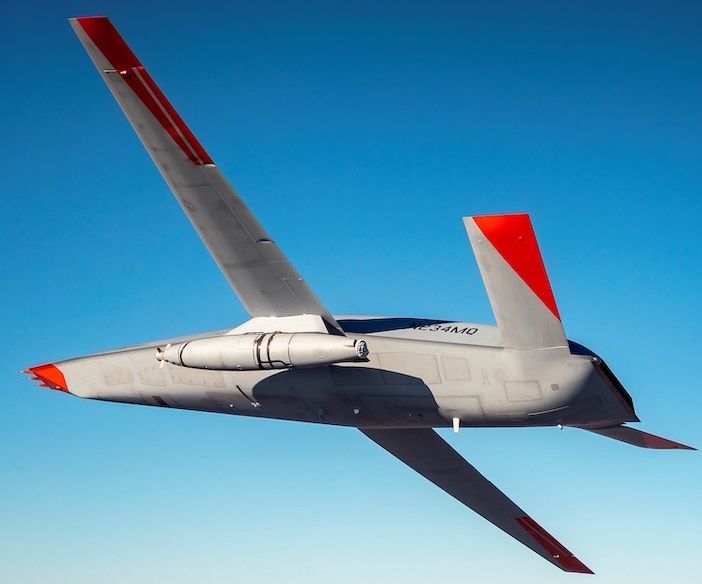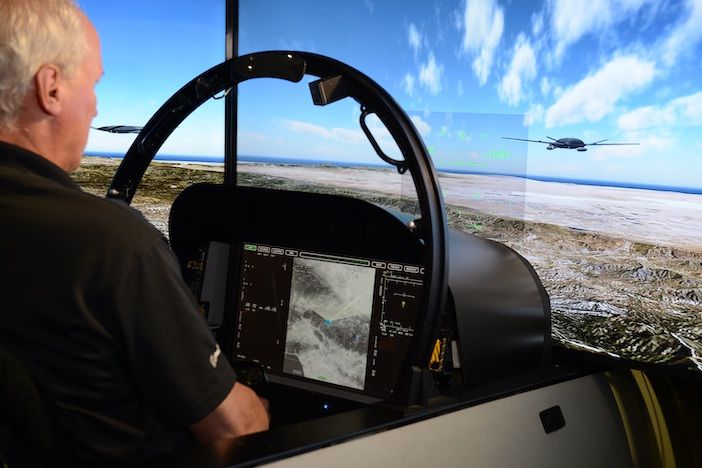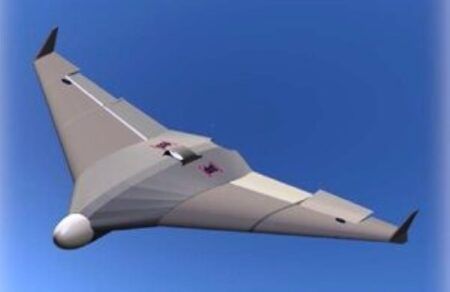Simulations conducted by Boeing engineers have shown how its unmanned refuelling drone the MQ-25 can be controlled by manned US Navy aircraft to extend the roles it can fulfil.
The MQ-25 Stingray has been in development for more than ten years as a refuelling drone to be used from the US Navy’s aircraft carriers. It was initially developed to have a strike and reconnaissance capability was modified to fulfil the aerial refuelling of F/A-18s and other carrier-based aircraft to increase their strike range.
The US Navy has seven MQ-25 test aircraft ordered under a contract that could expand to cover 72 at a cost of around US$13 billion according to a contract placed in 2018.
The recent virtual simulations used new open autonomy architecture with the MQ-25 to enable US Navy aircraft to use manned-unmanned teaming (MUM-T) systems. The demonstration showed Northrop Grumman’s E- Hawkeye command and control aircraft, Boeing’s P-8A Poseidon maritime patrol and reconnaissance aircraft and Boeing’s F/A-18 Super Hornet fighter jet controlling the MQ-25.
The demonstration showed how the other aircraft can use the MQ-25 to conduct tanking and intelligence, surveillance and reconnaissance (ISR) missions without traditional communications with the ship-based ground control station.

The aircraft used their existing operational flight program software and data links to task four virtual, autonomous MQ-25s to conduct ISR missions. The F/A-18 also used its tactical data links and Boeing’s conceptual “Project Black Ice” crew vehicle interface, to significantly reduce aircrew workload.
Don Gaddis, director of MQ-25 Advanced Design at Boeing said, “Large swaths of ocean could be surveilled, identified and targeted when MQ-25 is teamed with carrier-based assets such as the E-2D or the land-based P-8A patrol aircraft.
“Through this demonstration, our customers saw how this digital, open approach to MUM-T is key to fielding critical warfighting capability at much lower cost and with greater speed and agility.”
The onboard autonomy framework has been developed by Boeing subsidiary Aurora Flight Sciences, while the MQ-25 autonomously performed the rest of the simulated missions, such as validating the command against its operational constraints, planning its route and conducting its search pattern, among many other tasks.
Aurora also created and demonstrated a prototype platform abstraction layer – a software boundary that decouples MQ-25’s flight safety and flight critical components from mission software and sensor hardware. This commercial best practice allows third-party “app” integration on MQ-25. Using an Aurora-provided software development kit, Naval Air Warfare Center Aircraft Division created a new radar search application for MQ-25 that was successfully used during the demonstration.

“Aurora’s robust software development kit enables our Navy teammates to rapidly integrate new capabilities,” said Graham Drozeski, vice president of government programs for Aurora Flight Sciences. “The platform abstraction demonstration met test objectives for resource sharing between multiple onboard systems and supervisors, and these efforts will greatly reduce government test and certification costs as new capabilities are added over time.”
Engineers are now working on refining the autonomy, sensors, interface exchanges and crew vehicle interfaces required for MUM-T.





